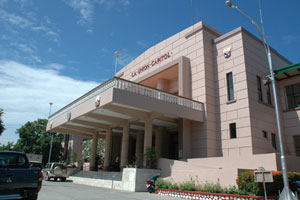Trivia about the Province of La Union
The creation of a new province in northwestern Luzon was conceived by Spain’s most dynamic colonial chief Governor General Narciso Claveria y Zaldua — on October 29, 1849 to address the exigencies of colonial policies, geographic considerations, religious factors and economic enterprise.
On March 2, 1850, his successor, interim Governor General Antonio Ma. Blanco, issued an Executive Decree that officially gave birth to the Philippines’ 34th province, La Union. This colonial act was approved by Queen Isabela II of Spain through a Royal Decree issued on April 18, 1854.
Its name, which means “the union” or “the united” in Spanish, was borne out of the following facts: 1) The province was a fusion of three contiguous territories — Ilocos Sur, Pangasinan and Benguet; 2) The co-existence of three ethnic groups — the Ilokanos, the Pangasinenses and the Igorots — was mandated; and 3) Three missionary groups — the Franciscans, the Dominicans and the Agustinians invaded the province and civilized it “under the bells”. Notably, however, it was the Agustinians who wielded the most influence in conquering the souls and restructuring the indigenous culture of its inhabitants.
While it was the last province constituted by the Spaniards and classified as political-military government until the end of its colonial rule, it was the second province to be bestowed civilian government status by the Americans and became the laboratory for American style of local governance in the country.
Through its 150 years, La Union has significantly contributed its share to the economic, social, cultural, moral and political development of the country. It has firmly set the flow and pace of development in coastal upland areas and has steadily built itself up. It is now the emerging agro-industrial and tourism center of the North Quad.
Despite its relatively rapid growth, it has earnestly maintained and improved her record as the most peaceful, cleanest and greenest province in Region I. It is also one of the country’s “Top Ten” provinces and is undeniably one of the most congenial abodes in the Philippines where 639,673 friendly and hospitable people have set up their homes.
Originally composed of twelve (12) towns, La Union is now composed of 576 barangays constituting its nineteen (19) municipalities and one (1) City that now serves as the government center of Region I. Needless to say, La Union is one of the most viable places for investment in the entire country.


Recent Comments